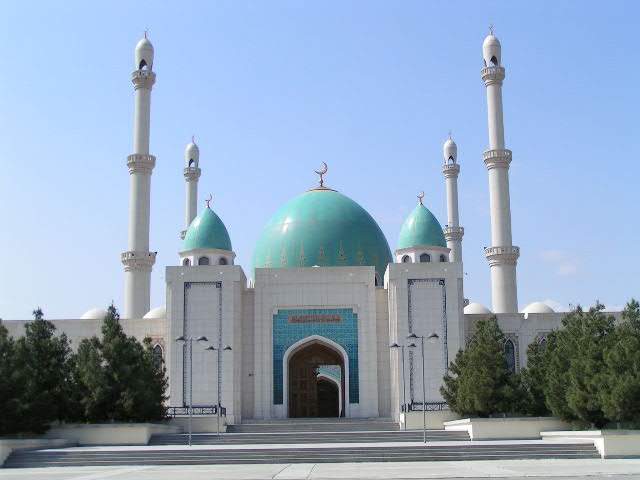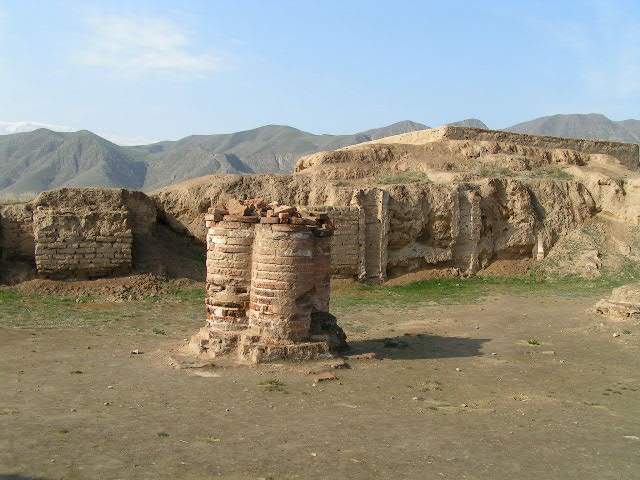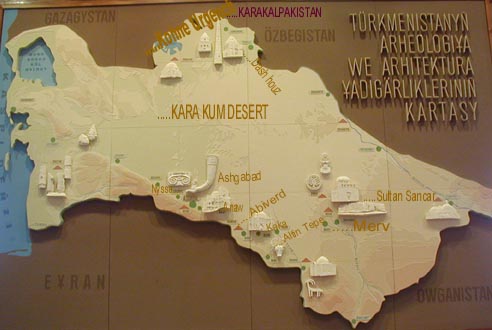|
The main excavations are of a
concentration of larger buildings. Of particular interest is the
construction of the columns used to support the buildings. A few original
columns are visible and reconstructions have been done to show their full
makeup. The archaeologists have covered some smaller areas with dirt to
preserve them from further deterioration. Significant finds such as
beautifully decorated rythons are now housed in the National History
Museum in Ashgabad. Near the Nissa site we noticed some type of
construction that zig-zagged up the nearby foothills. What we thought
might be an oil pipeline was a hiking trail that included many stairs on
the steep hillside. The government is improving recreational facilities
to encourage people to enjoy the outdoors.
We took a drive into a gorge of the
Kopet Dag mountains until we could go no further because of a road
closure. As we ascended into the mountains the terrain became very dry
and rocky and natural vegetation appeared to grow only the banks of small
rivers or streams.
We visited the large modern mosque at
Geok Tepe that commemorates the bloody battle between the Russians and
Turkmen in 1881. Friday services were in progress. Near the front of the
mosque we noticed prayer rugs of varying designs on the floor. They had
been donated by people. The ceiling and dome were painted white with
simple designs and the walls were faced with tiles depicting the five
basic Turkmen carpet designs.
After we returned to the hotel a couple
of us visited the Russian Market that was located two blocks from the Arch
of Neutrality. A two-story building of shops enclosed a large covered
area on three sides. The covered area appeared to be somewhat organized
in that one area contained refrigerated cases of sausages, cured meats and
fresh chicken, another a large bakery area with many fancy decorated
cakes, area for produce, area of hot prepared food, and so forth. There
was a separate room for fresh meat that did not appear to be refrigerated.
We didnít spend much time in the stalls outside the main building because
it was very crowded.
We returned to the hotel by way of Leninís statue, the only one remaining
in the city from the original thirty or so. The statue stands on an
elaborately tiled, high pedestal with Lenin in a typical pointing pose.
Dinner at the hotel was the official
start of the tour.
Pictures below are submitted by Carol and
Bob Okano
|

Gok Tepe |

Nyssa |
|


